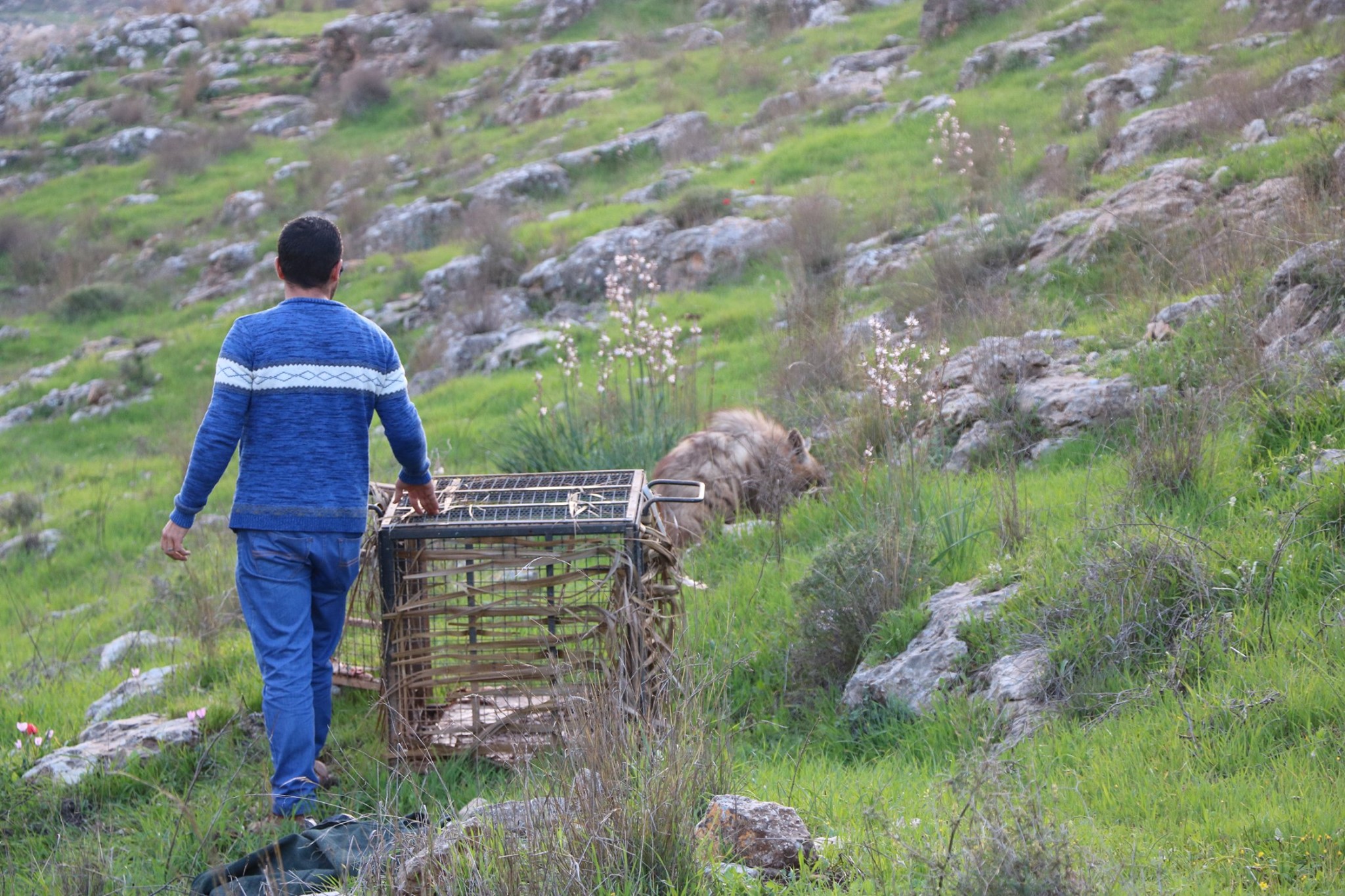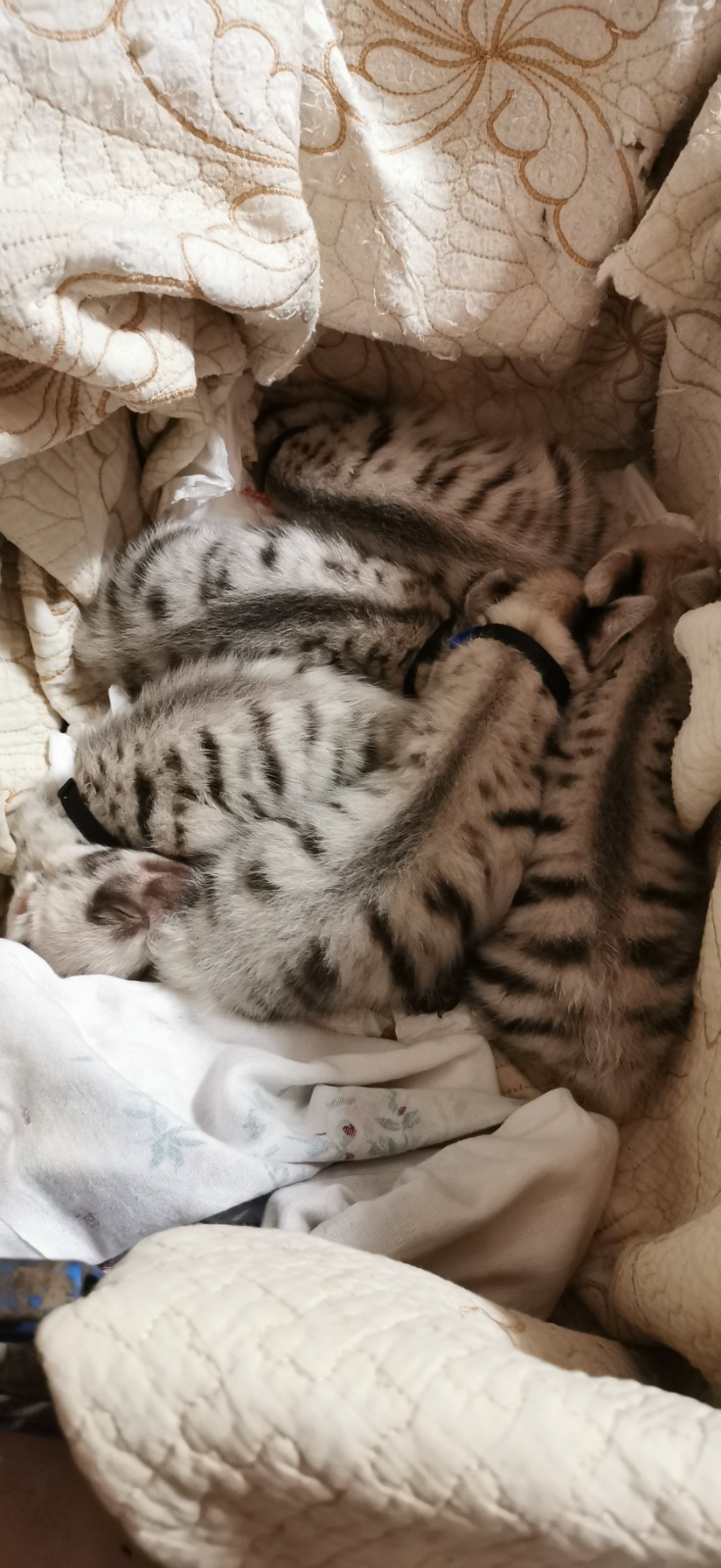Animal Rehabilitation Unit
At the inception of the institute, a fox and an eagle owl were brought for treatment and subsequent release. This event inspired the establishment of an Animal Rehabilitation Unit, leveraging the institute's existing expertise and resources. Collaborating with staff, the institute evaluates and treats various wild animals, engaging veterinarians to provide necessary care. Animals are either released back into the wild or temporarily housed within the institute for further rehabilitation as needed.
Leveraging its network of relationships with global biodiversity specialists, the institute consults experts in animal rehabilitation. Drawing from experience gained with previously received animals, the institute continually builds and refines its Animal Rehabilitation Unit. Over time, the unit has received numerous animals from residents and the Environmental Quality Authority. Working in partnership with the Environmental Police, the institute evaluates and cares for wild animals confiscated from stores before releasing them. These releases are often conducted in the presence of Environmental Quality Authority and Environmental Police personnel.
The unit accommodates a variety of mammals, including foxes, hyenas, European badgers, mongooses (Martins), bats, as well as birds such as the golden eagle, eagle owl, black kite, and crows. Additionally, reptiles like snakes are among the diverse range of animals the unit has received and rehabilitated.
The most prominent animals that are received and worked with are:
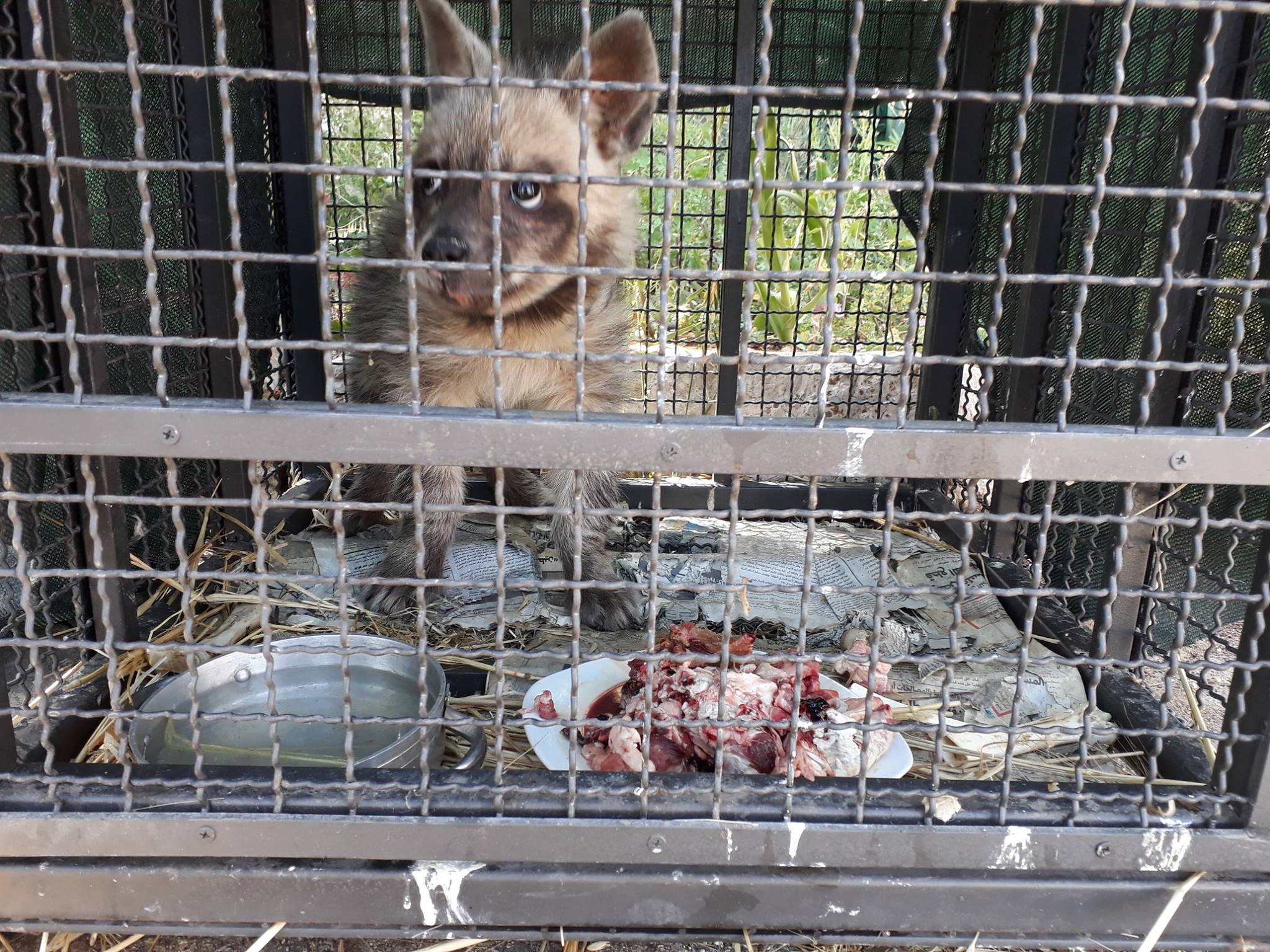 Linda on the day she was rescued.
Linda on the day she was rescued.
Striped Hyenas
Inhabit diverse ecosystems, from mountains and grasslands to scrub woodlands. Typically, they have a lifespan of about 12 years, though they can live longer in captivity. Despite their wide distribution, the Striped Hyena faces a declining population, with only 5000 - 10,000 mature individuals, leading the IUCN to categorize the species as 'near threatened.' Threats include road traffic, hunting, and the hindrance posed by separation walls, which restrict their movement and fragment their habitat. Unfounded myths contribute to human fear and occasional harm towards hyenas, despite their natural timidity.
At PIBS, staff and volunteers exercise extra care with hyenas to prevent them from becoming domesticated. In 2023, five hyena puppies were rescued from the Environmental Quality Authority and the Palestine Society for Environment and Sustainable Development. Originally taken from their burrow and offered for sale, they were confiscated, delivered to the Palestine Society, and then brought to the Institute. Despite efforts to return them to their original habitat, the presence of local residents prevented a safe release, prompting their continued stay at the Institute, where they thrived in good health.
In 2022, another hyena injured in a car accident was treated and temporarily kept at PIBS before being released in the presence of representatives from the Environmental Quality Authority and the Environmental Police.
In May 2019, PIBS received a Striped Hyena cub named 'Linda' from the Environmental Quality Authority. Seized from Hebron, where she was being sold online, Linda, at four months old, had no family and faced challenges in surviving if released immediately. The staff decided to keep her at the museum, creating a suitable enclosure.
The limited land at PMNH posed challenges, but staff and volunteers worked to equip Linda with survival skills. Despite her young age, Linda dug a burrow under an olive tree in her enclosure. Released in February 2020, Linda, coaxed into a cage, was transported to a rural area for release. A subsequent visit revealed pawprints near the release site, suggesting Linda is thriving in her new home.
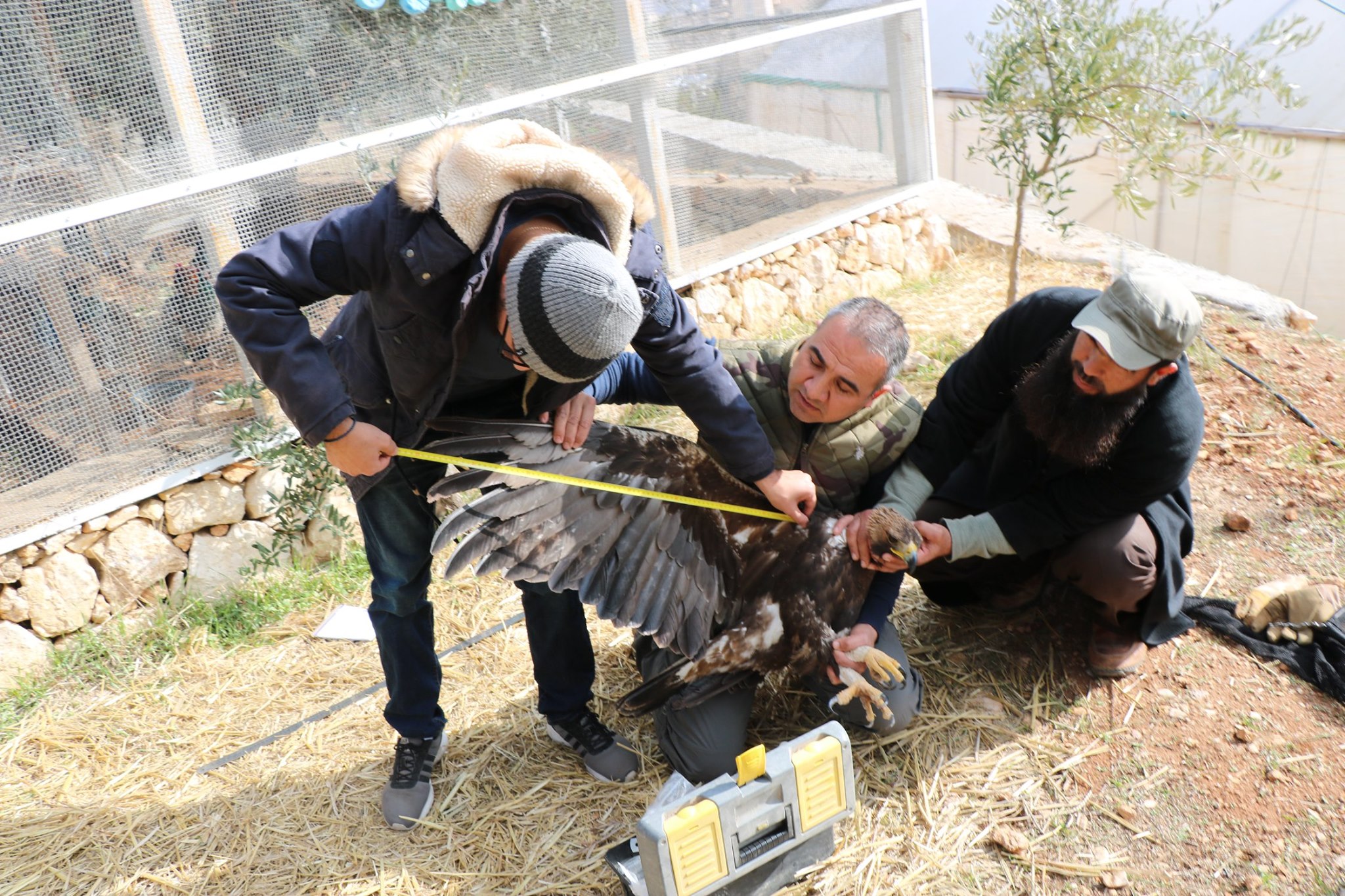 taking the necessary measurements of the eagle before it was launched.
taking the necessary measurements of the eagle before it was launched.
Golden Eagle, Aquila chrysaetos
The Golden Eagle, an immense bird of prey boasting a wingspan exceeding two meters, can thrive for up to 30 years in the wild. With a vast habitat range spanning Asia, Europe, North America, and parts of northern Africa, this species is classified as 'least concern' by the IUCN but remains uncommon across its territory.
In December 2019, during a late evening, a weakened Golden Eagle was brought to the Qumsiyeh's apartment in Beit Sahour. The eagle had ingested part of a goat's carcass laced with poison, intended to target hyenas. Discovered by a tour guide, the eagle was transported to the Qumsiyeh's accommodation block for care.
Over several days at the museum, the eagle received nourishment and attention, gradually regaining its strength. After approximately a week, the eagle reached a point of recovery where it could be released. Staff and volunteers from PIBS and the EQA observed with anticipation as the eagle gracefully soared away over the mountains of Nablus.
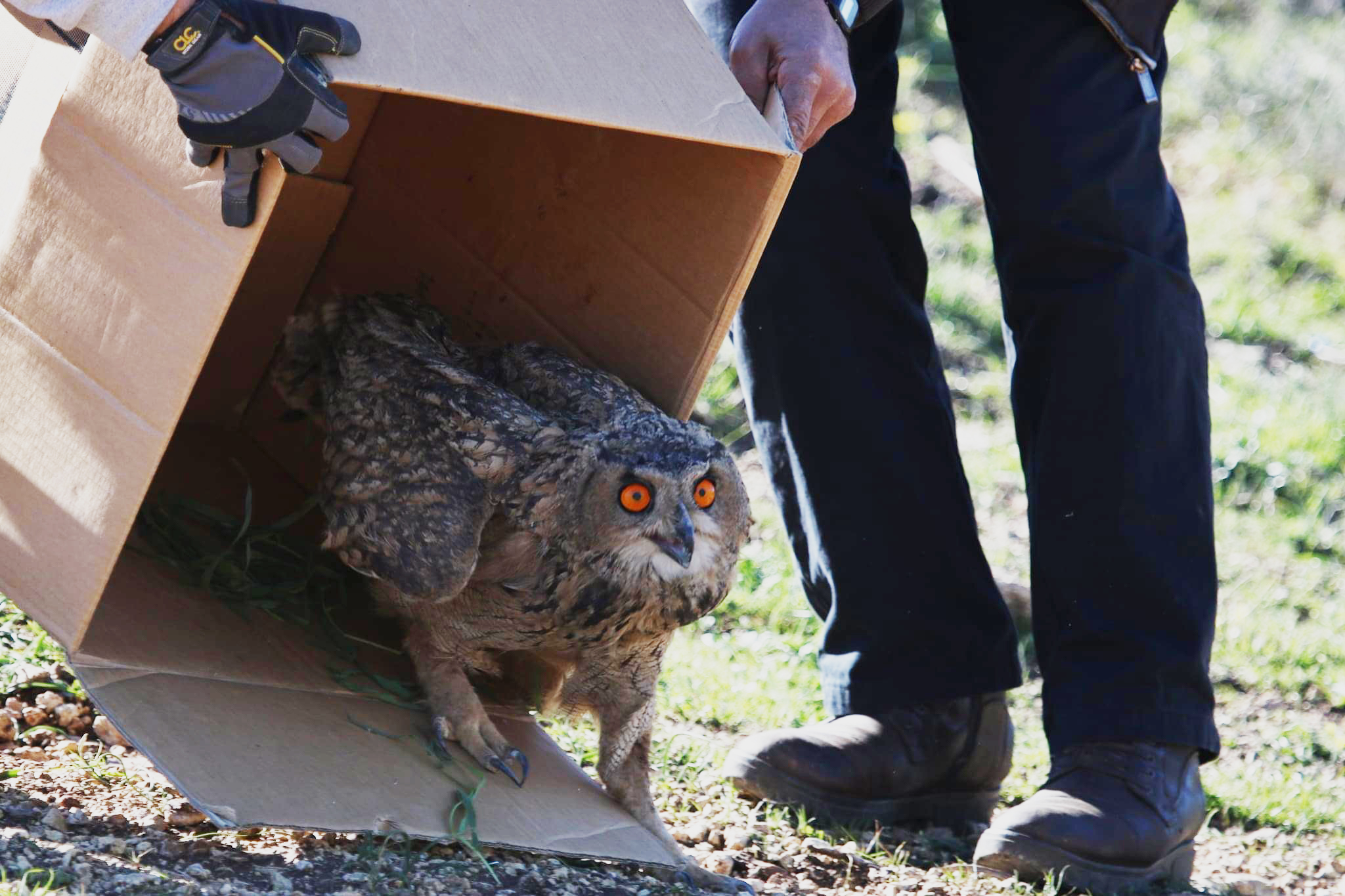 launched the Eagle owl
launched the Eagle owl
Eurasian eagle Owl, Bubo bubo
The Eurasian Eagle Owl is a resident of rocky slopes and valleys in humid and semiarid Mediterranean habitats in Palestine. While these owls are adaptable to various environments, they are commonly found in mountainous regions, rocky areas, woodland edges, shrubby areas with openings, farmlands, and occasionally even in busier urban locations. This owl species primarily operates as a nocturnal predator, hunting a diverse range of prey. Their diet consists mainly of small mammals such as rodents and rabbits, though they also prey on larger mammals and birds of different sizes. Additionally, their secondary prey may include reptiles, amphibians, fish, large insects, and various other invertebrates.

